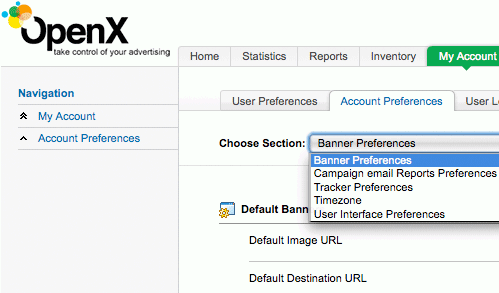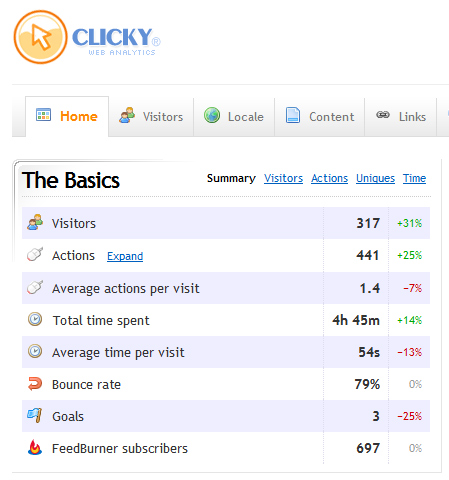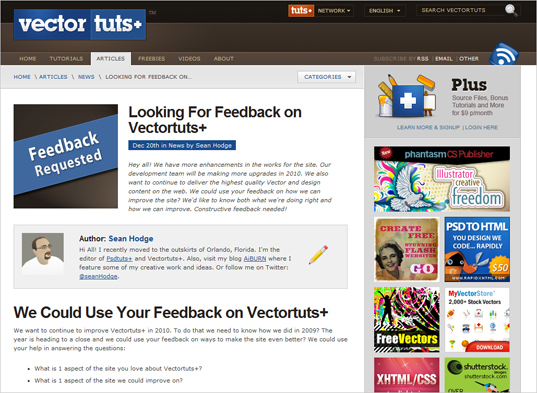Successful Strategies For Selling Ad Space On Low-Traffic Websites
Upon first thinking about it, the idea of selling advertising on a website or blog with limited traffic seems a bit daft. After all, aren’t most advertisers interested in putting their product in front of the highest number of eyeballs possible? Approaching them with piddly visitor numbers seems like a surefire way to end up in the deleted folder.
But though it may feel like putting the cart before the horse, there are many good reasons and ways to sell ad space on low-traffic websites. What you need to always keep in mind is that, while advertisers are drawn to high traffic numbers, they desire something else even more: high conversion rates. There are plenty of success stories of websites that have limited traffic but sell a ton of advertising. These websites succeed because they do one thing well: they deliver the right type of customer to the right type of business.
You may also want to take a look at our previous related articles:
- Getting Started with Banner Advertisements
- Ad Management Plug-Ins And Tutorials For Your Website
- Online Advertising And Its Impact On Web Design
What Do You Have To Offer?
Now, before you rush off and draft your first advertising offer, take a page from the Greeks and “know thyself.” This means you have to research your website first so that you can pitch it effectively to potential advertisers. Here are some good ways to research your website and its audience.
Clicky
Clicky has the advantage of providing real-time analytics, unlike Google Analytics. Areas to look out for are:
- What do people look at when they visit my website?
- What are my most popular pages?
- What pages do people stay on the longest?
- What keywords do they use to find my website?
With this knowledge, you can develop a picture of what interests your visitors and what kinds of advertisers would pay for access to people with those types of interests.
Here are some other analytical tools:
- Piwik: Open-source analytics that you install on your server.
- Woopra: Real-time analytics. The free plan is limited to 30,000 page views per month.
- W3Counter: Free hosted website analytics.
Poll Your Traffic
To delve even further into your visitors’ interests, put together a quick poll to find out what makes them tick. With a polling service, you can quickly put together a questionnaire that sheds further light on where your advertising focus should be. To get the best results from your survey, make it short, and perhaps even give away a gift to make it worth the respondents’ time. People rarely fill out surveys without an incentive.
Polling services include the following:
- Survey Monkey
- PollDaddy
- Micropoll
- StrawPoll (Twitter polling)
If you would rather not go this route, a simple request for feedback might work. Just put the word out that you are looking for input and then ask for comments.
Keep Your Ear to the Ground

Here, in the Smashing Magazine Team, we are monitoring all mentions of our products and services and reply to our customers when they have problems, ask for support or just share their opinions.
Another great way to find out what interests your audience is to track what people say about you on social networking websites such as Twitter and Facebook. Twitter lets you track mentions of your website or a particular phrase in tweets. See which of your posts gets a lot of retweets or what people are saying about your website.
Also, watch for articles that get bookmarked on Pocket and other social bookmarking websites. Searching for your domain name reveals articles that have been the most interesting to your visitors.
Finding Advertisers
Now that you have a good understanding of your website’s traffic, it’s time to get out there and find advertisers. Is there a minimum number of visitors you should have before approaching advertisers? While nothing is set in stone, 500 to 1000 unique daily visitors is probably a good starting point. However, numbers below these can still be workable, especially if your audience is highly targeted.
Here are some places to find advertisers:
- What websites link to yours? One place to look for advertisers is in your own analytics. Look for websites that currently link to yours and that offer a service or product you could advertise.
- Who’s commenting? Visit your commenters’ websites to find any advertising or promotional opportunities.
- Let Google AdWords lead the way. If you run Google AdWords, make note of which advertisements come up. After all, they are already spending money with Google, and Google is saying that your website is a good match for theirs. Approach them with an advertising opportunity that would give them greater visibility than what Google AdWords can deliver.
- Research websites with similar content. Who is advertising on those websites? They would probably be interested in your website, too.
- What names jump out? After compiling your visitor’s interests, some businesses may immediately spring to mind. These businesses will likely gel with your content. Make a list of them and contact them directly.
Check out the following article for additional information:
- How to Find Advertisers for Your Website: The Ultimate Guide
How to Approach Advertisers
Now that you know about your website’s visitors, you will want to draft an advertising package to present to potential advertisers. Here are a few things you may want to include:
- Demonstrate visitor interest. List the interests of your website’s visitors. Advertisers want to know that what they’re selling will appeal to your visitors.
- Disclose bounce rate, average time on site and page views. Advertisers will want to know how sticky your website is. If much of your traffic stays for only a few seconds, advertisers would want to know that. The longer your traffic sticks around, the higher the chance that ads will be seen and clicked.
- Showcase your monthly stats. Advertisers will want to know your website’s statistics over several months to see what kind of increase you have had and how many unique visitors you are getting per month. A steady climb in traffic shows great potential.
- Track outbound links. You certainly don’t want to overpromise the number of clicks an ad will receive. If you’ve been tracking outbound links with a service such as Google Ad Manager, you will have pretty concrete numbers to work with when approaching advertisers (assuming, of course, that you have already run at least one test advertisement on your website).
- Keep it personal. Don’t blanket email advertisers with a cut-and-pasted pitch. Advertisers will more likely respond if they feel you have personally researched their product and matched it carefully to your website.
These statistics will be a great help when you are ready to approach your first advertiser. Your goal is to show how you’ll be able to leverage your audience to deliver a highly targeted customer to them. Doing that successfully will show value even if your traffic is relatively low.
To give you a real-life example, I recently ran some advertising on a website that averaged 92,000 daily page views, along with one that had only 2,000. The website with less traffic brought in 41 clicks, while the bigger website brought in only 2. Which website do you think I would spend my advertising dollars on? Traffic is one thing, but conversion numbers are much more important.
Keep Advertisers Happy

So, you’ve landed your first advertiser. Good work! But getting the advertiser is merely the first step. If you want to develop a long-term relationship with your advertisers, you’ll need to know how to keep them happy:
- Give them the information they want. Conversation rates are king. To keep advertisers happy, deliver information on how their ads are doing. The good news is that most ad-management services have built-in reporting that sends advertisers updates on how their ads are doing.
- Promote your website. Give your advertisers your best content and promotions. That may mean holding back some premium content while you get advertisers lined up, especially if you will be guest posting or foresee a huge spike in traffic. You want all of your ads positioned so that they can take advantage of that new traffic.
- Keep them informed. Introducing a new ad size? Writing a new series of articles? Give your current advertisers the first crack at these premium ads spots.
- Run promotions. Advertisers love a deal. Sweeten the pot with occasional promotions. This is a great way to bring back former advertisers that have recently dropped out.
- Get feedback. Ask your advertisers outright what they think. They’ll appreciate that you care, and you will receive a heap of useful information that you can use to improve your ad strategy.
Sell Ads Yourself Or Join A Network?
Handling your own advertising or joining a large advertising network each has its pros and cons. Some large networks may not give you the time of day if you don’t have enough traffic to begin with. Here are some ways to sell advertising; you can mix and match methods to come up with your own solution.
Sell Directly

If you prefer the hands-on approach, then you’ll probably want to sell your advertising spots directly to advertisers. Using one of the following programs will alleviate some of the stress that comes with selling directly:
- OpenX OpenX is an open-source advertising server that is licensed under the GNU General Public License.
- OIO Publisher A WordPress and standalone ad manager.
- Random / Rotating Ads Ad plug-in for WordPress
- Easy Ad-Manager A standalone ad manger.
For more options and management tips, check out the article Ad Management Plug-Ins And Tutorials For Your Website.
Remember, handling your own ad sales will net you the biggest slice of the profit, but it also requires the most work.
- Limit your offering. No advertiser wants to see 10 different “Advertise Here” boxes on your website. Start small by offering one advertising slot, and then increase as you sell them.
- Get the word out. Use social network websites such as Twitter to spread the news that you have advertising spots available. You don’t want to spam your network, but an occasional reminder won’t hurt.
- Partner with websites with similar interests. If your traffic is too low to attract the kind of advertisers you’re interested in, why not partner with other websites that share your interest? Start your own mini-network, and then offer advertisers the opportunity to pay one price to advertise on multiple websites.
- Start a promotion. In the beginning, you may have to give away ad spots for nothing or next to nothing. So, offer a promotion to get advertisers in the door. If you’ve done your research and you deliver high-quality traffic, those advertisers will be much more willing to pay when the promotion runs out. Remember to track outbound traffic on these links because it contains valuable information that you can use when you contact your next advertiser.
Selling Through Ad Networks
Ad networks can put you in touch with many more advertisers, but they also take a chunk of your bottom line. Often this chunk will be negligible, considering the network will allow you to sell more ad space. Here are a few good networks to try:
BuySellAds Unless you live in a cave, you’ve probably already heard of BuySellAds.com. Though a relative newcomer to the advertising scene, BuySellAds.com has achieved great market penetration. One caveat is that it focuses on websites for designers and developers. So, if your website falls beyond this category, you may want to try elsewhere.

Project Wonderful Project Wonderful is a great place to start your advertising campaign because its prerequisite to join is relatively low. The idea behind the website is to allow potential advertisers to bid on your ad spots. The more that advertisers want what you offer, the higher your daily advertising rate. While Project Wonderful promises to bring advertisers to you, you may find yourself sitting in the $0 per day budget range as you build traffic or until an advertiser decides to take a chance on you.
Chitika Chitika is a little different than other ad networks because it scans the search strings of people who are directed to your website and then serves up ads that match those search strings. Think of it like Google AdSense with a twist.
Whichever ad network you choose, make sure it pays per click (i.e. pays money for every click the ad gets) rather than uses CPM (i.e. money for every thousand views your website gets).
Here are some additional ad networks:
Be Careful With Your Advertising
Not all advertisers will be a good fit for your website, and you may be forced to decide whether to run an ad that falls beyond your website’s objectives. For example, you’ve probably seen hundreds of websites lately that advertise teeth whitening and weight loss services. While the revenue from such ads is probably good, would the ads be appropriate for your audience?
Ask yourself these questions before deciding to run an ad:
- Does this ad fit the content of my website?
- Would the ad offend or annoy my visitors?
- Would it distract visitors from the content?
- Would it call into question the integrity of my website?
Always remember that any advertisement that drives away traffic from your website, even if it pays wells, will ultimately hurt rather than help. You will hear loud and clear from your community if it thinks you have sold out for advertising dollars. Don’t let it get to that point; set firm advertising standards ahead of time.
You may be interested in the following further reading:
- Should Your Business Website Accept Paid Advertising?
- The Ethical Journalist’s Guide to Selling Ads on a Website
Summary
Selling advertising on a low-traffic website doesn’t have to be mission impossible. With the right research and pitch, you’re well on your way to landing your first advertiser. Figuring out what works for you and your website doesn’t mean picking one strategy and sticking with it. Try multiple approaches, and track the results. Whether you prefer to sell your own ad spots, partner with other websites or join a network, mix and match methods to create a strategy that works for you. Advertising on your website is an ongoing organic process that takes research, patience and time.
Have you had success in displaying ads on your website? What has worked for you? We’d love to hear your tips in the comments!
Additional Resources to Sell Ads
- Ad Management Plug-Ins And Tutorials For Your Website
- Selling Ad Space Tips From the Top Design Bloggers
- Which Ad Network Should Work Best for Your blog?
- Universal Ad Package Sizes
- Comparison of 13 Pay-per-Click Networks
- Selling Advertising Space
- Online Advertising And Its Impact On Web Design



 SurveyJS: White-Label Survey Solution for Your JS App
SurveyJS: White-Label Survey Solution for Your JS App

 Agent Ready is the new Headless
Agent Ready is the new Headless






